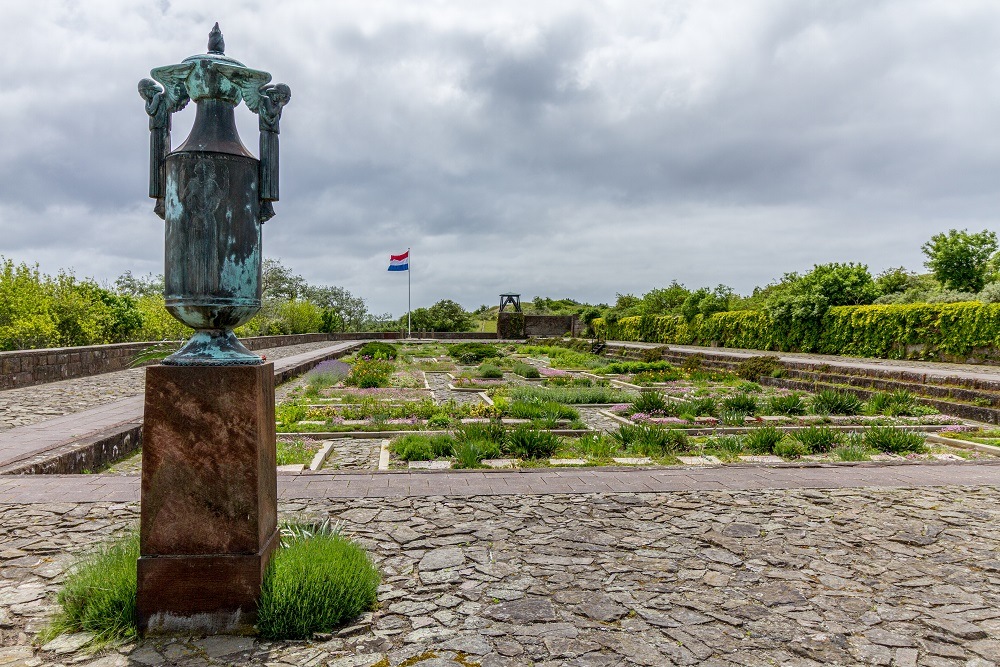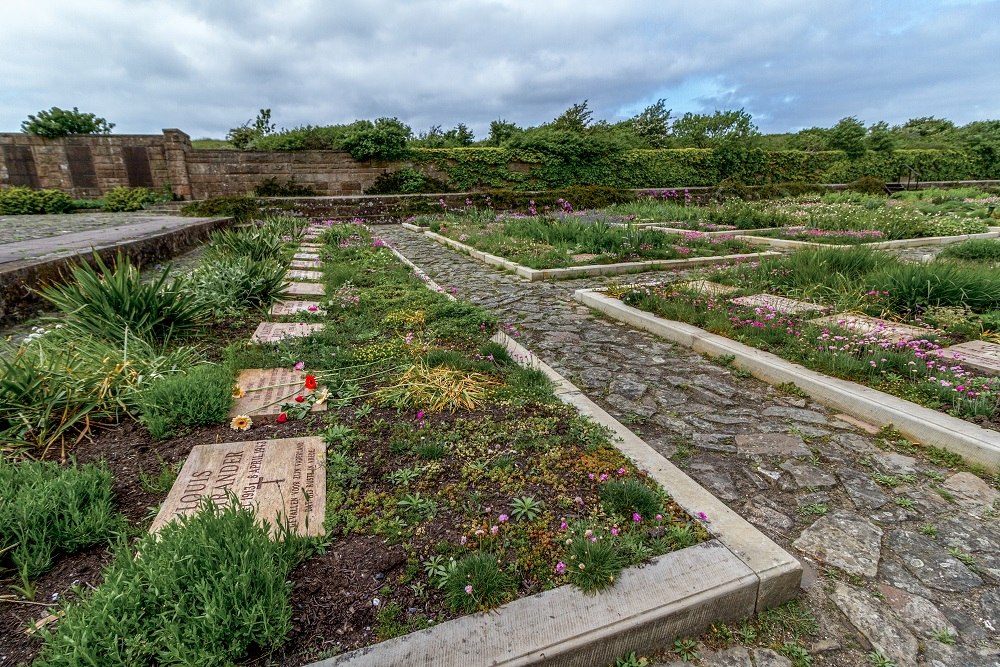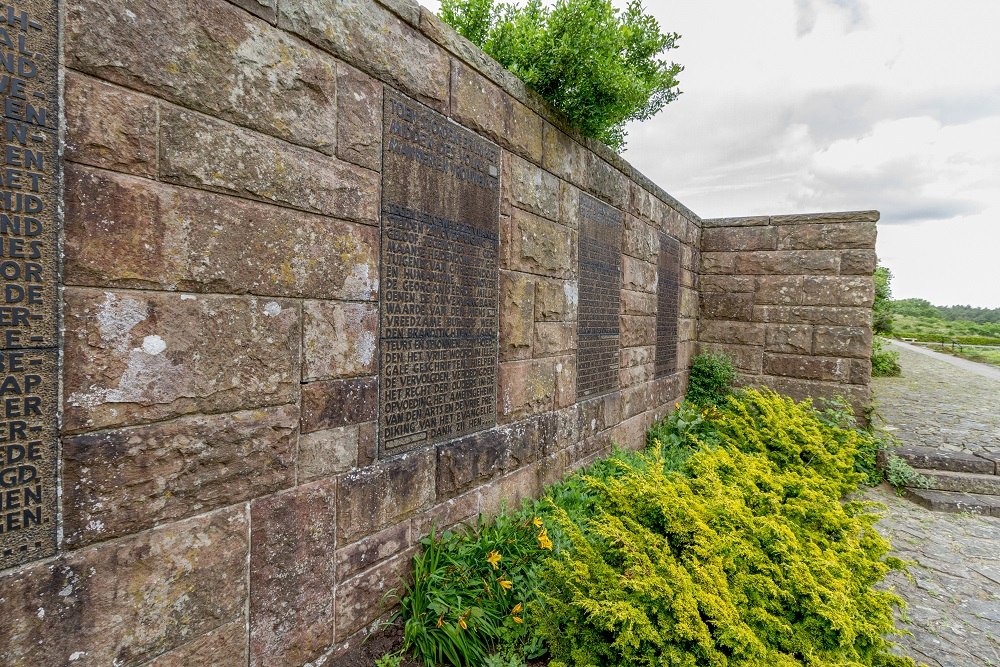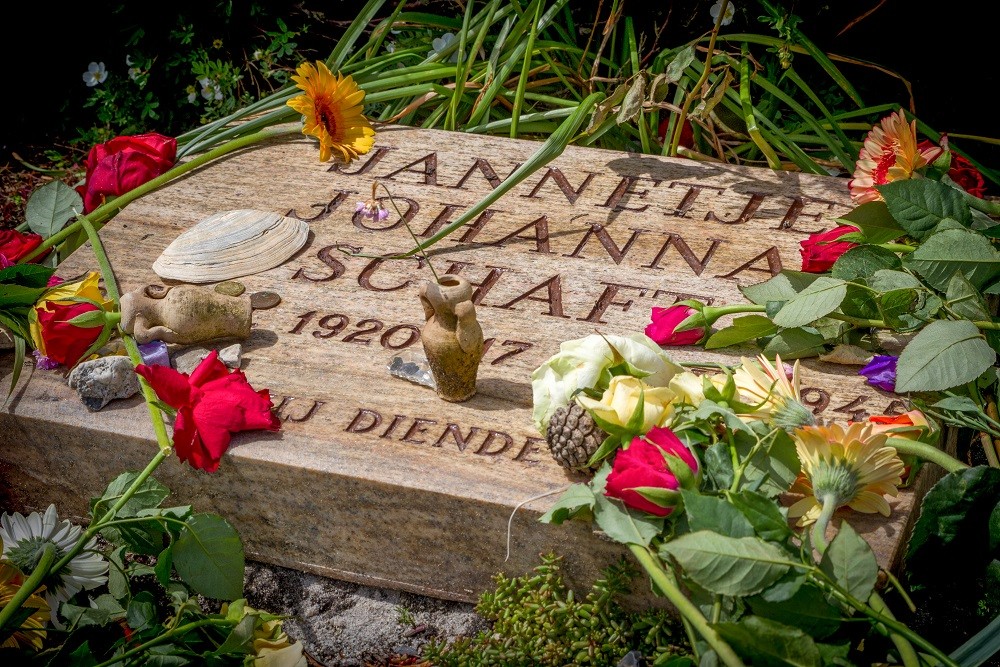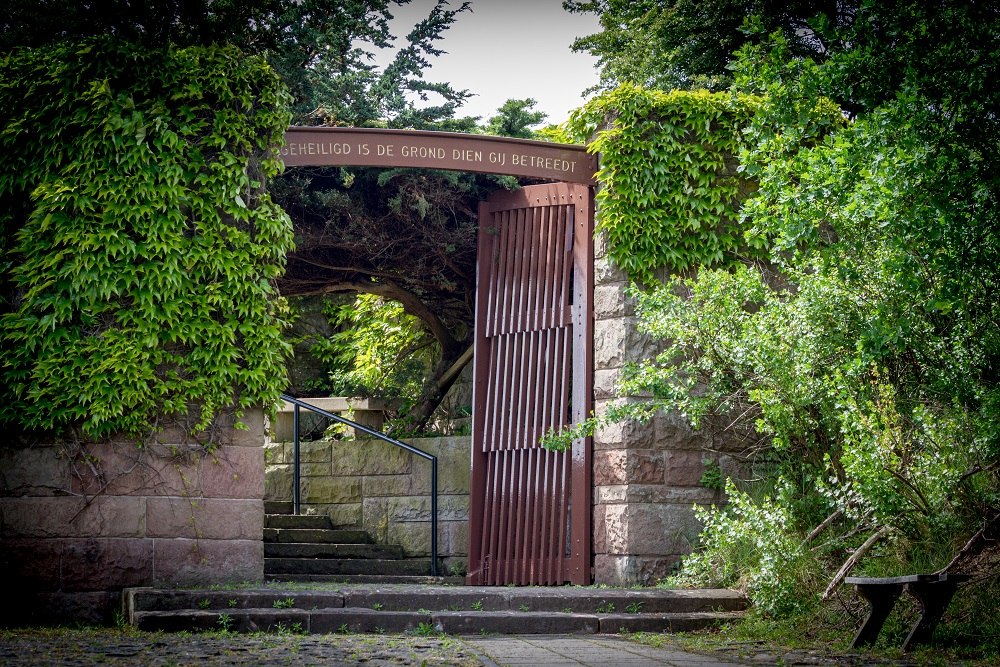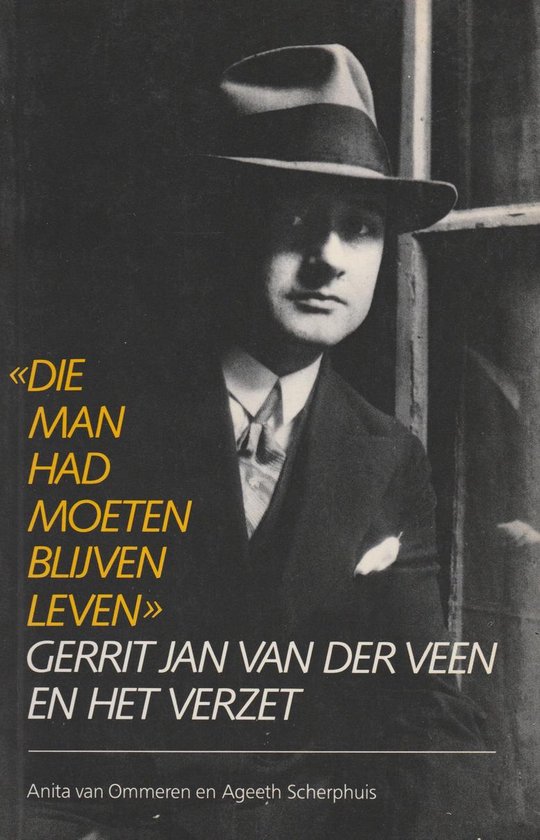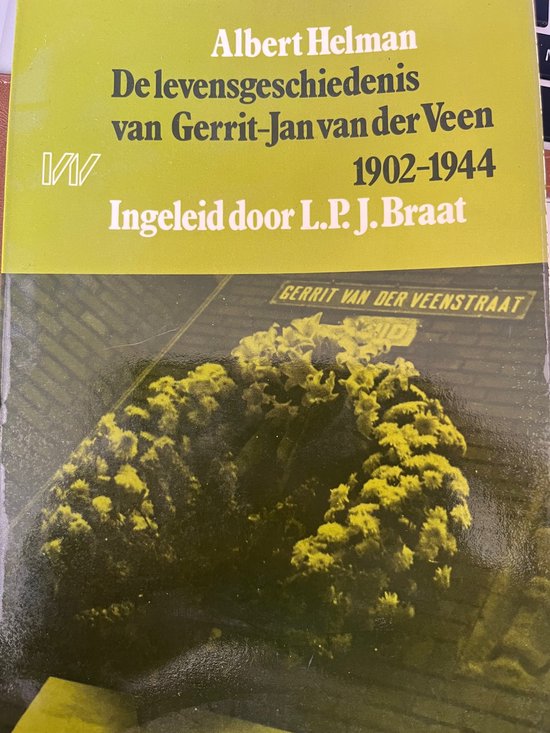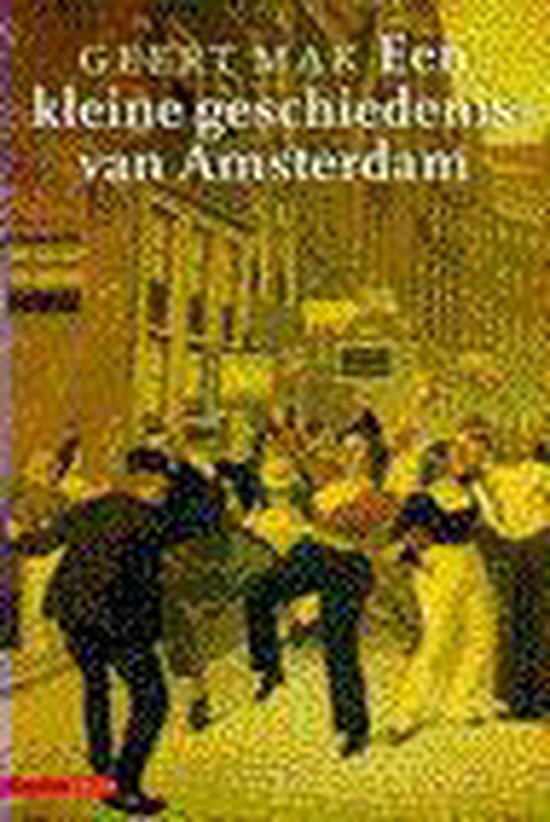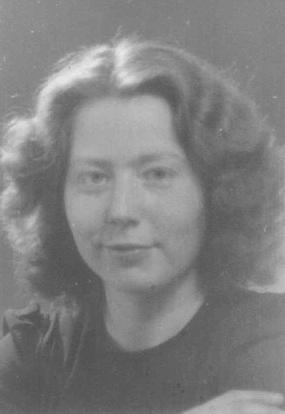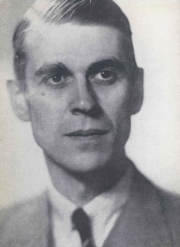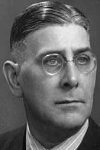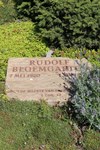Dutch Honorary Cemetery Bloemendaal
"In these dunes our dead rest".
When the summer approaches and we take our bicycles in order to cycle to the dunes and the North Sea beach, we can hardly imagine it but nevertheless it happened here in our own Kennemerduinen. Where today the hawthorn flowers and the west wind bents the lyme-grass, hundreds of Dutchmen were killed, Dutchmen that disturbed the German occupying forces in whatever way – sometimes with the dozens, sometimes alone – . Murdered. Or dumped. In the month of May of 1945 they were found. 422 bodies. Most of them perished in the last months before the liberation. Eight large memorial tablets, some hidden in an overgrown dune valley, another one, very confronting, next to the bicycle track remind you of their find-spots. On those stones, in strangling simplicity, it has been stated how many murdered resistance members were buried there in and around that spot. Soon after the war the first mass graves were discovered. In total there are 45 find-spots. Identification was not a simple affair and it was performed under the guidance of the surgeon and former resistance member Dr H. Wamsteker from Haarlem. Most deceased were robbed from their clothing and personal possessions. The only traces to be followed were the condition of sets of teeth of the victims. Dentists from all over the country cooperated resulting in the fact that identification finally succeeded. Also through the statement of the NSB-undertaker*, who had to transport the victims, killed by the Germans, to the dune area. He was supposed to leave them there "in good order". Also through his meticulously maintained ‘bookkeeping’ people could be found and identified. Of two bodies only the identity has not been established. This exercise has taken months and months and hundreds of volunteers have been slaving day and night in order to attribute the last honors to the deceased. The first reburial took place on the Honorary Cemetery on the 27th of November, 1945, in the presence of the Royal Family. The last interment took place ten years later. 422 persons were found in the dunes but also from other graves, war victims have been buried on the Honorary Cemetery. Also some of the victims have been reburied near their hometown or near the spot where they were executed on request of their relatives. Also some of the deceased have been buried near their fallen comrades from the same resistance cell at the Honorary Cemetery: the number of graves is 372. One tombstone carries the text: "In memory of the friends of the resistance whom have not been found after their battle for freedom or who have been laid to rest elsewhere." Underneath this headstone there are no human remains. One woman in their midst: Hannie Schaft. ( Dutch national heroin from Haarlem: "The girl with the red hair".) In 1948 the 8 tablets have been placed on the find-spots with text: "Here (number) of killed resistance members were found." Found May 1945.
* (NSB was the political party in The Netherlands that sympathized with the German occupier. Any other undertaker would have refused to collaborate.)
These stones out of Maulbrunn sandstone have been carved by stonemason Toon Lavertu, 24 years of age together with his father at the site in the Kennemer dunes. The carving has taken place on the find-spots. The pre-cut stones have been provided with lettering in high relief. The lettering is, as a matter of speech, put on top of the stone. That took several weeks of work. According to Mr. Lavertu it was a tough job. "Around us there were still the holes in the ground where the executions had taken place. It was covered with machine gun cartridge cases, the earth still breathed murder."
In the spring of 2000 the sandstone monuments have been replaced by red granite memorial stones. The exchange was judged to be necessary because six out of the eight tablets were weathered and disintegrating. The two others remaining were still in a good condition but have also been exchanged in order to prevent decay; these have been adopted by the Oranje Nassau School and the Hannie Schaft School in Zandvoort. The municipality of Bloemendaal and the "Foundation Honorary Cemetery Overveen" had decided about one year before that the memorial stones had to be replaced. Each weighed approximately 1700 kilograms. The stone cutting and lettering (in France) took approximately three months according to the stone mason from Haarlem Mr J.Troupin. At the replacement ceremony there were no participants apart from the mayor of Zandvoort Mr. Van der Heijden and Mrs Snoeck, mayor of Bloemendaal. With the red granite in the dunes, three smaller groups and five bigger groups of resistance members are memorized "amongst whom Hannie Schaft".
Do you have more information about this location? Inform us!
Source
- Text: Willemien Spook
- Photos: Marcel Bloemzaad Fotografie
Related books
Nearby
Museum
Point of interest
- German Concrete Road National Park Kennemerland - Bloemendaal
- German Practice Bombs National Park Kennemerland - Bloemendaal
- German Concrete Road National Park Kennemerland - Bloemendaal
Monument
- Memorial 21 Resistance members Zuid-Kennemerland - Bloemendaal
- Memorial 92 Resistance members Zuid-Kennemerland - Bloemendaal
- Memorial 199 Resistance members Zuid-Kennemerland - Bloemendaal
Cemetery
- Dutch War Graves General Cemetery Bloemendaal - Bloemendaal
- Commonwealth War Graves General Cemetery Bloemendaal - Bloemendaal
- Commonwealth War Grave Sint Adelbertus Bloemendaal - Bloemendaal
Remembrance Stone
- Stumbling Stones Bloemveldlaan 70 - Haarlem
- Stumbling Stone Schoonoordlaan 10 - Haarlem
- Stumbling Stones Julianalaan 47 - Overveen
Fortification
- Atlantikwall - Tank Wall - Bloemendaal aan Zee
- Atlantikwall - Tank Wall - Bloemendaal aan Zee
- Atlantikwall - Tobruk - Bloemendaal aan Zee
